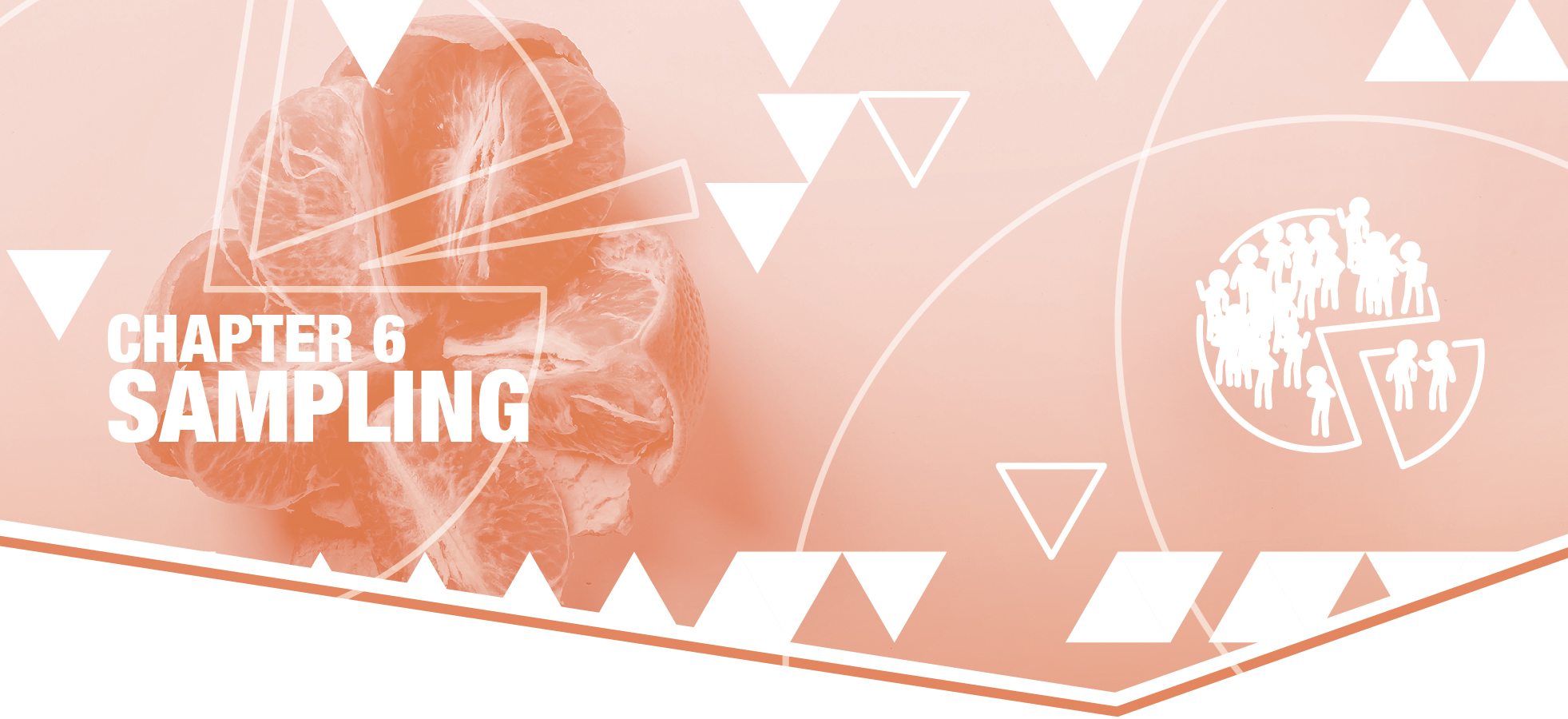6. Sampling
 How can a survey of a small group of people tell us what the entire population of the United States thinks about a particular topic? To accurately measure public opinion, researchers do not necessarily have to talk to everyone in the population of interest. Rather, they can talk to a sample, a group of people who represent the entire population. This approach is similar to when a doctor examines a few drops of blood (i.e., a blood sample) and draws conclusions about the constitution of a person’s blood throughout their whole body.
How can a survey of a small group of people tell us what the entire population of the United States thinks about a particular topic? To accurately measure public opinion, researchers do not necessarily have to talk to everyone in the population of interest. Rather, they can talk to a sample, a group of people who represent the entire population. This approach is similar to when a doctor examines a few drops of blood (i.e., a blood sample) and draws conclusions about the constitution of a person’s blood throughout their whole body.
Sociologists are usually interested in making claims about a larger group of people—what we have called a population. A population could be all adults in a country, or all workers at a company, or all students at a university, but it could also be a particular group—say, college athletes, international students, or older adults living with diabetes. It could also be something other than a group of people, such as social media posts published on one platform in the past year, horror movies released in the 1990s, protest events during the civil rights era, and so on. Even if the population that sociologists want to learn about is relatively small, it’s usually impossible for them to study all of the members or parts of that group. So, they typically choose to study a sample—that is, a segment of the group that contains a manageable number of cases (units from the population). The cases in the sample are supposed to represent the larger population. What a sociologist learns about that particular sample will hopefully be true for the entire population.

Sampling has to do with this process of selecting a subset of the population of interest and using it to draw reasonable conclusions about the characteristics of that population. Proper sampling is critical when conducting many kinds of empirical research. For example, biologists collect their data by examining and measuring a sample of the organic matter they’re studying, such as plants or soil. In a similar way, sociologists obtain samples of social information, often by interviewing or observing groups of people.
In this chapter, we will learn about various approaches to sampling and the reasons that sociologists might use certain techniques while avoiding others. We will talk about how we can judge the quality of particular samples and sampling strategies, and what problems can occur when we obtain skewed samples that don’t accurately represent what is going on in the broader social world. In the process, we will identify basic questions that should be asked whenever a study uses a sample to make claims about a population.
How researchers sample, and whom or what they sample, fundamentally shapes the conclusions that they are able to draw from their data. That said, we want to stress that there are many appropriate ways to conduct sampling for a given research project. Like other aspects of sociological research, sampling is an art in addition to a science, and some of the best work arises when sociologists think creatively about how and whom to sample.
Opening chapter image credit: Karolina Kaboompics, via Pexels. Adapted by Bizhan Khodabandeh.
The subset of the larger population that the researcher has collected data from, and that represent the target population within the study.
The larger group that a sample of people (or other units of analysis) are drawn from, and that the sample is intended to represent.
Members of the sample that the researcher has gathered data on, such as the individual interviewees or organizations being studied.
The process of selecting cases or observations that will be analyzed for research purposes.

